If I have such string in XAML:
Storyboard.TargetProperty="Margin" From="1,2,3,4" To="0,0,0,0"
What is Top Bottom Right and Left? 1- right 2- top 3- left 4 - bottom
Is that right?
If I have such string in XAML:
Storyboard.TargetProperty="Margin" From="1,2,3,4" To="0,0,0,0"
What is Top Bottom Right and Left? 1- right 2- top 3- left 4 - bottom
Is that right?
Margin="1,2,3,4"
It is also possible to specify just two sizes like this:
Margin="1,2"
Finally you can specify a single size:
Margin="1"
The order is the same as in WinForms.
There are three unique situations:
Margin="a,b,c,d".Margin="a,b".Margin="a".If there are 4 numbers, then its left, top, right, bottom (a clockwise circle starting from the middle left margin). First number is always the "West" like "WPF":
<object Margin="left,top,right,bottom"/>
Example: if we use Margin="10,20,30,40" it generates:

If there are 2 numbers, then the first is left & right margin thickness, the second is top & bottom margin thickness. First number is always the "West" like "WPF":
<object Margin="a,b"/> // Equivalent to Margin="a,b,a,b".
Example: if we use Margin="10,30", the left & right margin are both 10, and the top & bottom are both 30.

If there is 1 number, then the number is repeated (its essentially a border thickness).
<object Margin="a"/> // Equivalent to Margin="a,a,a,a".
Example: if we use Margin="20" it generates:

Have been working on a large-scale WPF application for the past 5 years with over 100 screens. Part of a team of 5 WPF/C#/Java devs. We eventually settled on either using 1 number (for border thickness) or 4 numbers. We never use 2. It is consistent, and seems to be a good way to reduce cognitive load when developing.
The rule:
All width numbers start on the left (the "West" like "WPF") and go clockwise (if two numbers, only go clockwise twice, then mirror the rest).
Just because @MartinCapodici 's comment is awesome I write here as an answer to give visibility.
All clockwise:
<object Margin="left,top,right,bottom"/>
- or -
<object Margin="left,top"/>
- or -
<object Margin="thicknessReference"/>
See here: http://msdn.microsoft.com/en-us/library/system.windows.frameworkelement.margin.aspx